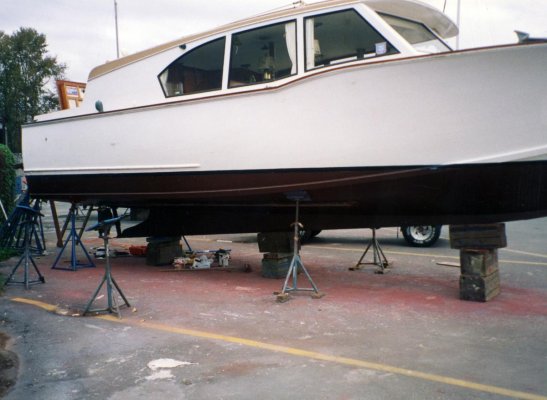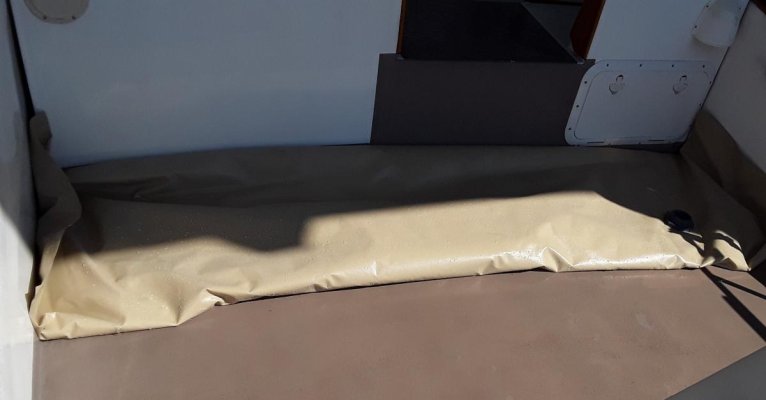Now that we have answered the OP's original question;
Stabilizers: A Must for Passage-Making? ("No" for some, "Yes" for others, "Depends" for the rest) I looked at the Monk 58 and the posts here about that boat's "tenderness." I also agree that it isn't stability, it's comfort that is being discussed (i.e., not stabilizers, but comforters?)
In addition to the tenderness of the hull effecting comfort, it is also one's relation to the hull. And by "one's relation," that generally means who is at the helm or sometimes the location of the crew when underway. My most vivid experience with this was as crew on the
NOAA ship Discoverer. My berth was well below the working deck, at about waterline aft of mid-ship. The berth had a bar to keep one from rolling out, but I never used it, even in rough seas. The bridge, however, was 35 feet above waterline. Rough weather there was a challenge, but I was young and agile and had a wheel to hold on to. The conning tower was 30 feet higher than the bridge, straight up a ladder though a tube to a ride scarier than anything at the county fair. I believe the quartermaster kept access locked, and for a good reason. Had my bunk been up there, I'm not sure a bar would have kept me in bed. The point is, one's position relative to the hull makes a big difference in perceived comfort.
A picture of the Monk 58
(like Swan Song)* shows that the helm is raised, not uncommon for this sized vessel. But compare that to an older Monk design like the sedan cruisers (generally not ocean going vessels). My 32' is pictured below. It had a V-drive, so the engine was under the rear cockpit and one took three steps down to enter the cabin and get to the helm. When standing at the helm, my feet were at or close to the waterline and center of roll.
From a comfort point of view, having one's feet "on the surface" of the water was nice. There was none of that "clinging to the masthead" feel from being well above water level. Granted that there probably aren't any ocean going passage makers with a helm this low, but the height of the helm/living quarters is another "depends" factor.
* Not sure how old this for sale advertisement is or where
Swan Song is now. The ad has lots of pictures, including its anti-roll tank. It does illustrate one of the criticisms of an ART. When retrofitted, they can be unsightly. They are certainly not as attractive as a fake smoke stack, now the
de rigueur ornament above the helm. I would think that an original equipment ART could be merged with the pilot house so that it would disappear. Too bad Mr. Monk isn't around to figure that one out.


